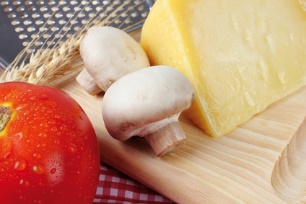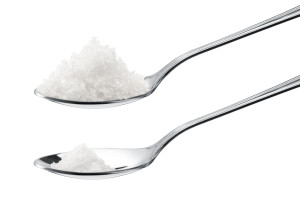
Who doesn’t love what fat does for the taste of food?
Most people love some type of fatty food: French fries, cheeseburgers, deep-fried anything. I have often said that I could get someone to eat rocks or insects, or anything, if I just dipped it in batter and deep-fried it. Then there are buttery sauces, the mayonnaise in grandma’s special potato salad – or if you’re going fancy, the mayonnaise you make yourself with EVOO (chef-speak for “extra-virgin olive oil”) and herbs or spices.
We don’t have to apologize for liking some kind of fatty food. Fat adds flavor to food. But it also adds a ton of calories. The age-old dilemma, especially for those of us wanting or needing to cut back on our fat and calorie intake, is how to do so and still feel like we’re indulging ourselves with flavorful food.
Umami = Flavor
Umami is the “fifth taste”, joining sweet, salty, bitter, and sour. While the latter four provide distinct flavors, umami is more of a taste intensifier. It heightens the flavor of the foods that contain it. Sweet, salty, bitter and sour are flavors imparted by specific the compounds in many foods: sugar and honey for instance, are sweet and make foods they’re added to sweet.
Umami comes from a common compound called glutamate. Glutamate is an amino acid, one of the building blocks of proteins. It’s a “non-essential” amino acid because our bodies make it.
 You’ve probably heard of monosodium glutamate, or MSG. It’s been used as a flavor enhancer for over a century and it’s nothing more than the amino acid glutamate connected to a molecule of sodium. Glutamate is also naturally present in plenty of animal and plant foods. Which foods? Here are just a few:
You’ve probably heard of monosodium glutamate, or MSG. It’s been used as a flavor enhancer for over a century and it’s nothing more than the amino acid glutamate connected to a molecule of sodium. Glutamate is also naturally present in plenty of animal and plant foods. Which foods? Here are just a few:
- Mushrooms
- Tomatoes
- Eggplant
- Beef
- Aged cheeses, especially Parmesan cheese
Looking at the above list, is it any wonder why they’re prominent in so many global cuisines? Many condiments and spices, such as soy sauce, garlic powder, and paprika are also high in glutamate and bring lots of umami to the foods they’re used in.
Many cuisines have also made good use of MSG as an ingredient in their dishes. While Chinese food has been associated with MSG, it’s long been used in most Asian cuisines but many cuisines from South America and the Caribbean use seasonings that contain MSG.
Is Glutamate a “Fat-Replacer”? A “Salt-Replacer”?
It’s neither, but glutamate improves flavor and helps reduce reliance on added fat and sodium for flavor. Used wisely, MSG can help people have a lower-fat, lower-sodium eating style that still gives them just as much flavor and satisfaction, perhaps even more.
 MSG contains sodium but not nearly as much as typical table salt. Indeed, gram for gram, MSG has 62% LESS sodium than table salt, yet it adds more flavor. MSG can’t completely replace the added salt in foods, but a 1:1 blend of table salt and MSG can still lower the amount of sodium added to your favorite dishes by a whopping 31%! Best part: no loss in flavor, and in many cases even more enhanced flavor.
MSG contains sodium but not nearly as much as typical table salt. Indeed, gram for gram, MSG has 62% LESS sodium than table salt, yet it adds more flavor. MSG can’t completely replace the added salt in foods, but a 1:1 blend of table salt and MSG can still lower the amount of sodium added to your favorite dishes by a whopping 31%! Best part: no loss in flavor, and in many cases even more enhanced flavor.
How Does Glutamate Work to Enhance Flavor?
In addition to making our own glutamate, our taste buds also detect glutamate in foods. This was reinforced in a recent review of the research that investigated the evidence for how glutamate works on taste receptors on the tongue. The researchers of the scientific review concluded:
“Concentrations of glutamate….and other compounds in food products may enhance saltiness and overall flavor. Umami ingredients may help to reduce the consumption of salts and fats in the general population and increase food consumption in the elderly.”
Enhancing taste with less added sodium is a worthy goal for most people, and can be especially important for elderly persons, who can have an altered or diminished sense of taste. If nutritious foods taste better to them, it can improve their appetites and interest in eating. Judicious use of added MSG can help encourage more consumption of foods like vegetables, whole grains and leaner protein foods, to help people meet dietary goals.
As a registered dietitian-nutritionist (RDN), I always look for a “win-win” that combines health benefits with improved taste. Umami in foods, to help reduce added fat and sodium and help food taste better? That’s my kind of eating style.

